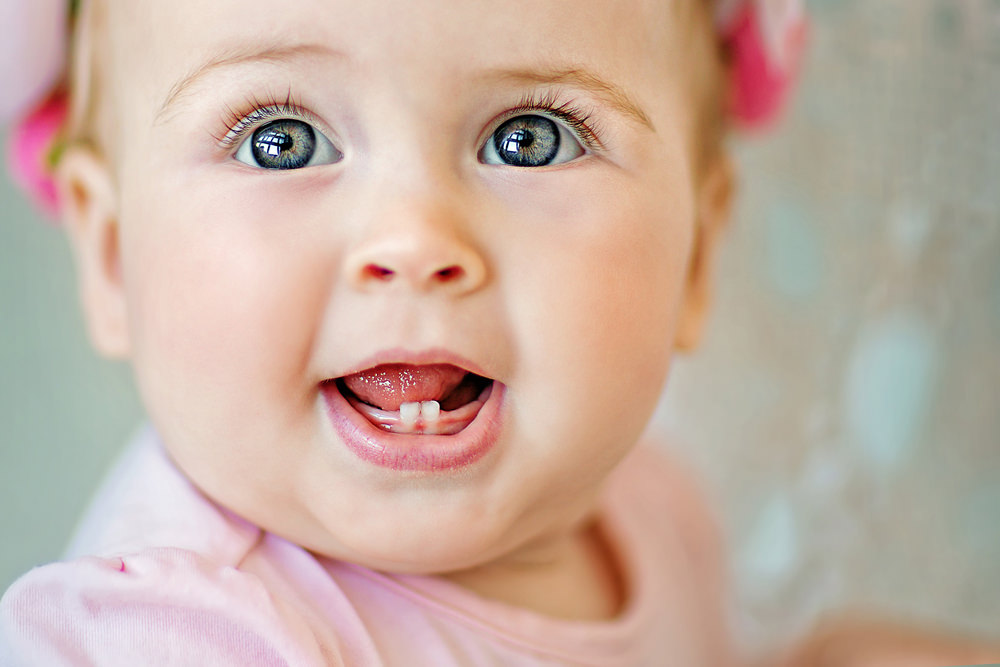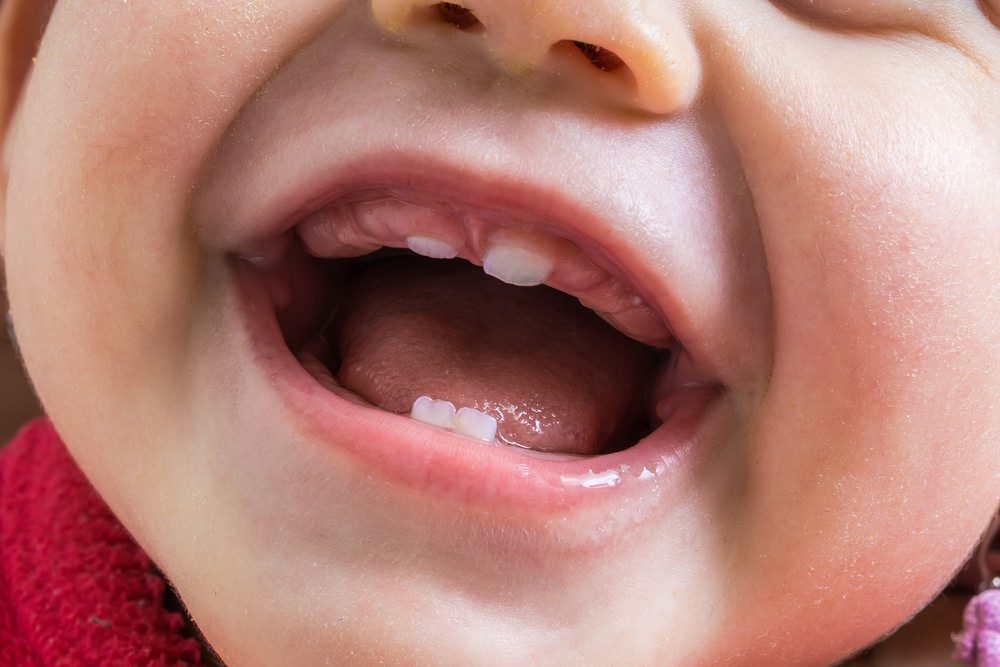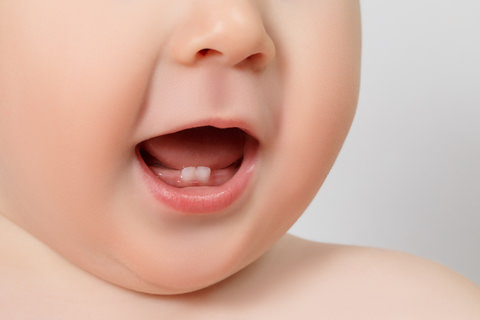Teething Remedies – Insights and Tips!

A question that parents have likely thought about more than once – what are the best baby teething remedies?
Teething can be a very difficult time for both parents and babies to undergo, but it can usually be taken care of with just a few home remedies and an added dash of patience.
Knowing the signs could make the teething phase a little easier for you and your little one.
How Long Does Teething Last For?
The good news about teething? It does end!
Generally speaking, by the age of two to two and two and a half, the majority of their baby teeth will erupt and in place.
When your child is approximately three, you should be able to see their full set of twenty baby teeth in position.
What Are the Common Teething Stages?
There is no “normal” time to expect the baby teeth to come in – all children are different. Their formation and growth vary.
What is handy to know is in what order the teeth appear in the mouth.
As the size and shape of the teeth may alter the symptoms that the child may experience.
The order of eruption happens in 5 stages.
A general guide is listed below:
- 0 – 6 months – Your baby is usually born with a full set of 20 primary teeth. These are hidden beneath their gums, in their jawbones.
- 6 – 8 months – Your baby will generally start teething by roughly 6 months of age.
Most of the time, the first teeth to appear are their lower central incisors (the two front teeth on their lower jaw).
This is usually followed by the appearance of their upper central incisors (the two front teeth on the top jaw).
Please Note: Signs of teething such as discomfort, redness, gum swelling and temperature may appear months prior to the appearance of the teeth.
- 10 – 14 months – This is when their primary first molars (the teeth in the back of the mouth, both top and bottom) will start to breakthrough.
- 16 – 22 months – Now, your baby’s canine teeth (eye teeth, the teeth that are situated between the upper and lower incisors and molars) will come up.
- 25 – 33 months – This is when their biggest teeth, the large second molars, will emerge.
If your baby happens to be a few months off this timeline, this is not a reason for concern as this is only a general guideline.
Your baby’s first tooth may come up as early as three months, or as late as 12 months or longer. 6 – 8 months is just the average age.
Another thing to note is that if your baby was born premature, it’s likely their teeth will take longer to emerge.

What Are the Teething Signs to Look Out For?
There are several signs your baby is teething. These include:
- Cheeks that are red or have developed a nappy rash – To read more on this, see the sub-heading, “Why Do Babies Get Teething Rashes?”.
- Excessive dribbling – Your baby’s mouth will start to produce an overabundance of saliva, a natural process to try to cool down their gums.
- Chewing on solid items – Putting pressure on their gums is a way of your baby trying to lessen their discomfort of teething.
This may be sucking on their fingers or fist, or putting other items they find laying around in their mouth.
- Crying – Teething can be painful. The discomfort is also a type of feeling your baby hasn’t felt before. So, when crying, they’re trying to tell you something has changed, but they don’t know what.
- Crankiness – As an adult, most of us have undergone the pain of a toothache. Especially when at age 18 your third molars (wisdom teeth) were erupting. Pain makes most adults behave in a grumpy manner.
Lack of sleep may contribute to your baby’s crankiness.
This may continue until the soreness of the eruption is complete. It is not usually constant and may come in spurts depending on the stage of eruption.
- Gums that are tender or in pain – Their gums may be extremely red, and swollen.
- Loss of appetite – You may have difficulty feeding them, as when they suck on the breast or bottle, this leads to blood rushing to their tender gums. Or, they also may not be able to handle them being touched by solid foods.
- An irregular sleep schedule – If your baby is waking at strange hours during the night, and this cannot be put down to things such as sickness, or being too hot or cold, this loss of sleep can most likely be blamed on teething.
- Pulling their ears – The gums, cheeks, and teeth of your baby all have the same nerve pathway. Frequently during teething, you’ll see your baby rub their face and tug their ears.
It’s important that you make certain this is definitely an effect of teething, however, as it’s also something they do with an ear infection.
So a visit to your medical general practitioner to check their throat and ears may be advisable.
- Coughing, gagging – The excessive quantity of saliva in your baby’s mouth may lead to them coughing more than usual.
- A rise in body temperature – You may find that your baby gets a slightly higher than usual body temperature.
It’s important to note that this increase should never be major.
If your baby has a continuously high fever, please seek advice from your Doctor, finding out what’s causing this.
What Else Happens to Your Baby Through the Teething Phase?
When teething, more things are happening in the mouth of your baby that can impact the life-long development of their mouth, teeth and more.
Below are three main things that occur during teething.
Jaw development
Your baby is born with a small lower jaw (roughly 30% of their adult size) that is a little retruded. (set further back to accommodate for breastfeeding).
Within their first 12 months, this will grow significantly.
By 6 months, when your baby generally starts teething, you will notice their lower jaw starts to line up with their philtrum (the area above the upper lip) and bridge of their nose when you look at them side-on. (their profile begins to fill in)
This is an important part of the teething process as if your baby’s teeth erupt this signals the growth of the jaws.
Baby teeth are small for their small jaws and as they develop the adult teeth in turn signal the growth of their jaws further.
Having an upper and lower jaw size that does not match and give an adult profile could affect the eruption of the adult teeth leading to orthodontic and bite problems.
Mouth and Throat Growth
When born, your baby’s mouth and throat structures are close together, so there is little open space within these areas.
This helps the infants to feed and swallow safely.
As they grow and gain feeding skills, the space within their mouth and throat increases.
So, their mouth and throat area is also increasing in space when they start to teeth.
Pain
You can see how all of this growth can be painful for your baby.
Generally, the eruption of an individual tooth may be uncomfortable for only a few days at most and may stop and start during the eruption.
But this can last longer in younger babies, as they are less used to dealing with the discomfort.
Do Teething Necklaces Actually Work?
Teething necklaces have become a very popular alternative treatment.
But, do they work?
Simply put – no.
Despite claims these necklaces, which are made from amber, wood, marble, or silicone, can:
- Release pain-relieving matter into the bloodstream.
- Control drool, and
- Lessen the swelling of your baby’s ears, throat, stomach and respiratory system,
There’s no research to support their effectiveness.
A necklace around the neck of your baby can also pose a potential hazard.
The Risks
- Strangulation – When the necklaces are around an infants’ neck, particularly when not being supervised (such as sleeping).
- Choking – If they break the necklace, they can swallow the beads.
They released this after receiving reports of children who choked on beads that had broken off and others who reported harm by these necklaces.
You can instead refer to the remedies below to ease your baby’s pain.
Do Natural Remedies Work?
There are some natural remedies you could try to help and reduce some of your baby’s pain when teething. These include:
Cold
This is the best remedy. Behaving as a mild local anaesthetic, cold naturally numbs the pain.
Try giving them a teething ring or spoon that has been chilled, or a lovely, soft, clean, cold flannel that has been twisted and tied for easier gnawing.
Be sure not to freeze these items though – items that are too cold can damage gums and teeth.
Chewing objects
For more information on this, refer to the sub-heading “Best Teething Rings and Toys to Buy” below.
Massage
If you gently massage their gums with clean fingers, your knuckle, or a dampened gauze pad, this pressure can lessen their pain.
Hard foods
If your baby can already eat solids, you can give them a bit of food that has been chilled to gnaw upon.
The good ones to try are a peeled carrot or cucumber.
Just keep your eye well upon them while they are eating, as if bits of the food break off, they can choke on them.
Unsweetened teething rusks or sugar-free teething biscuits
As with hard foods, these should only be given to babies who have already started eating solids.
Dry their dribbles
Throughout the teething process, you’ll notice an excessive amount of drool coming from your baby’s mouth.
This will be even more so when they have their fingers, a teething ring, or any other item in their mouth.
For ideas on how to keep the drool at bay, see the sub-heading “Why Do Babies Get Teething Rashes”.
Sucking on a bottle
Filling a bottle with water and letting your baby suck can help to soothe teething pains.
It’s important you do not fill the bottle with milk or juice to soothe teething, as extensive contact with the sugar in these liquids can cause tooth decay.
Bonjella
This well-known teething gel acts as a numbing agent.
Apply it straight onto the area where the teeth are erupting.
Just be sure to not use it in excess, as by numbing the area you will stop blood flowing there, stopping it from healing.
Panadol
Panadol, or any over-the-counter painkillers that are suitable for a baby’s discomfort, can assist in lessening their pain, and their grumpiness too.
Be sure to check with the pharmacist or your doctor if it’s appropriate for your baby.
But it’s important to note that if your baby has a fever, is overwhelmingly uncomfortable, or starts to get any other symptoms that you think aren’t related to teething, you should contact your doctor to make sure no other issues have entered the picture.
Honey
I DO NOT recommend the use of honey.
An old-wives tale for teething pain, please don’t use honey on your baby’s gums. It’s not safe and may lead to major tooth decay.
Why Do Babies Get Teething Rashes?
If inflamed gums, moodiness, and upheaved sleep routine, and withholding eating wasn’t enough, teething can also bring along a rash.
This rash can show up on your baby’s mouth, cheeks, neck, and chest.
As mentioned several times now, your baby will have a noticeable increase in drool due to excess saliva.
This saliva contains a digestive enzyme that can irritate their skin.
When the drool dries on their cheeks, neck, or chest, it can cause a bumpy rash that’s made up of red splotches and has a strong smell.
You can help prevent this excess saliva from irritating their skin if you:
- Clean and dry their chin with a dry cloth. (soft and gentle)
- Change them out of wet clothes when needed.
- Use a mild, unscented baby wash when bathing.
- Create a protective barrier by applying a thin layer of creams such as unscented water-based moisturisers or coconut oil.
- Apply a bit of organic natural jelly as a preventative measure before a rash breaks out.
- Place a bib or cloth under their chin.
Best Teething Toys and Rings to Buy
Prior to new teeth erupting, the uneven edges of the teeth can push against your baby’s gums, so they tend to chew on any solid items available.
This pressure on their gums helps to reduce their pain while providing them with distraction.
So, giving them teething toys and rings will help ease their discomfort.
The best teething toys and rings you can buy are ones that:
- Are durable – Think about hard rubber, wood, or silicone. Avoid those that are filled with liquid, as these can break when your baby chews.
- Can be chilled in your refrigerator.
- Can be cleaned easily – This object will spend a lot of time in your baby’s mouth, so you’ll be cleaning it often. Look for those that can be boiled, sterilised with steam in a microwave, or are dishwasher safe.
- Have a design that suits your baby – Things to consider are if your baby can easily grab it with their hands, if it can fit in their mouth, and if there are enough textures on there to soothe their gums. No detachable bits or small rings could lodge in their throat.
Conclusion
This article is intended to give you insights into what your new baby/babies may be experiencing whilst they transverse this growth phase.
Just understanding may give you the patience to help your baby and yourself.
When your baby gets their 20 new teeth they will be in their toddler stage and ready to explore new foods, new speech and level of sleep.
For more information on baby and adolescent teeth, you can read my post, How to Take Care of Children’s Teeth.
By Dr. V
Created at June 18, 2021, Updated at January 25, 2025




